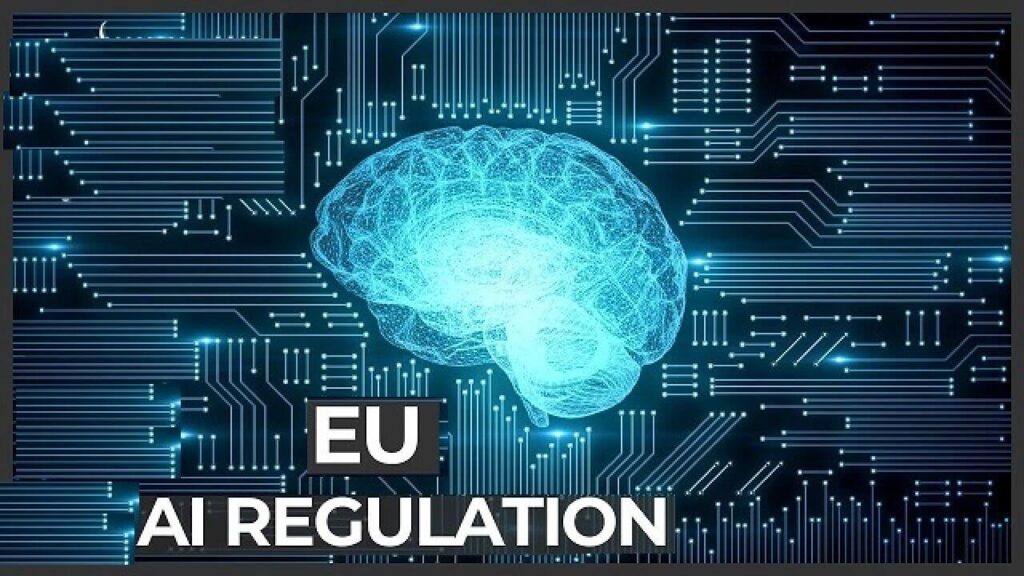Artificial Intelligence Eu Regulation
New Artificial Intelligence Regulation Proposal by the EU
The European Union (EU) has recently put forward a comprehensive proposal for the regulation of Artificial Intelligence (AI) technology. This proposed regulation aims to establish clear guidelines and standards to ensure the responsible and ethical development and use of AI within the EU. With the rapid advancements in AI technology, it has become imperative to address potential risks and ensure the protection of fundamental rights and values. Let's delve into the details of this groundbreaking proposal and understand its implications.
1. Purpose and Scope of the Regulation

The primary purpose of the proposed EU regulation is to create a harmonized framework for AI deployment throughout the member states, promoting trust and ensuring legal certainty. The regulation covers a wide range of AI systems, including those used for critical infrastructure, public services, and even AI-based applications such as chatbots and virtual assistants.
2. Key Principles and Requirements

The regulation puts forth a set of essential principles and requirements to address potential risks associated with AI.
2.1. Transparency and Clear Information Provision
The proposal emphasizes the need for transparency in AI systems to allow users to understand when they are interacting with AI. Developers and providers are encouraged to provide clear information regarding the capabilities and limitations of the AI system, ensuring users are well-informed.
2.2. Accuracy and Reliability
The regulation mandates that AI systems must be developed and trained using high-quality data to ensure accurate and reliable results. Bias in data collection and processing must be minimized to prevent discrimination and unfair treatment.
2.3. Human Oversight and Control
To uphold fundamental rights and values, the proposed regulation stresses the importance of human oversight throughout the AI system's lifecycle. Human intervention should be possible for critical decisions, enabling individuals to understand and challenge the outcomes.
3. Impact on Industry and Innovation
This regulation will undoubtedly have a significant impact on the AI industry and innovation within the EU. While it sets high standards for AI systems, it also aims to foster innovation by providing a supportive and clear regulatory environment.
3.1. Boosting Consumer Trust
By ensuring transparency, accuracy, and human oversight, the proposed regulation aims to enhance consumer trust in AI systems. This increased trust can drive adoption and acceptance of AI-based products and services in various sectors, such as healthcare, financial services, and transportation.
3.2. Opportunity for Collaboration
The regulation emphasizes the need for collaboration among member states, industry stakeholders, and research organizations. This collaborative approach will foster innovation, knowledge sharing, and the development of ethical AI solutions that comply with the regulation.
3.3. Competitive Advantage
By being at the forefront of AI regulation, the EU can establish itself as a global leader in responsible AI development. This competitive advantage can help EU companies expand their market share and attract international partners who value ethical AI practices.
FAQs
Here are some frequently asked questions regarding the proposed EU regulation on AI:
Q: Who will be responsible for enforcing the regulation?
A: The proposed regulation assigns the responsibility for enforcement to national supervisory authorities in each EU member state. These authorities will have the power to carry out audits, issue fines, and impose sanctions for non-compliance.
Q: How will this regulation impact startups and SMEs?
A: The EU recognizes the importance of supporting startups and small and medium-sized enterprises (SMEs) in the AI sector. The regulation includes tailored requirements based on the level of risk associated with the AI system, ensuring that the compliance burden on startups and SMEs remains proportionate.
Q: How will AI developers ensure compliance with the regulation?
A: AI developers will need to conduct thorough risk assessments, implement necessary technical and organizational measures, and document the conformity of their AI systems. In certain cases, AI systems may undergo third-party conformity assessments to ensure compliance with the regulation.
Q: Will this regulation stifle innovation in the AI sector?
A: The EU aims to strike a balance between regulation and innovation. While the proposed regulation establishes strict guidelines, it also allows for flexibility and fosters innovation by encouraging collaboration, knowledge sharing, and the development of ethical AI solutions.
Q: When will the regulation come into effect?
A: The proposed regulation is currently in the legislative process and will require approval from the EU Parliament and Council. If approved, it is expected to come into effect within the next few years, allowing businesses and stakeholders to adapt to the new regulatory framework.
In conclusion, the EU's proposed regulation on artificial intelligence sets a strong foundation for responsible AI development and use. By promoting transparency, accuracy, and human oversight, this regulation aims to protect fundamental rights, enhance consumer trust, and foster innovation. The FAQs provide further insights into the key aspects of this regulation, addressing common concerns and clarifying its impact on different stakeholders. The EU's approach to AI regulation serves as a compelling example for other regions and highlights the importance of ethical considerations in shaping the future of AI.
A New EU Regulation For Artificial Intelligence
 Image Source : blog.6clicks.com
Image Source : blog.6clicks.com regulation
EU Proposes First Ever Artificial Intelligence Regulation - AIMed
 Image Source : ai-med.io
Image Source : ai-med.io intelligence regulation proposes reaching
Artificial Intelligence: EU In Pole Position For Regulation. - Tonucci
 Image Source : tonucci.com
Image Source : tonucci.com tonucci regulation artificial
The EU’s Proposed Artificial Intelligence Regulation - An Overview Evalian®
 Image Source : evalian.co.uk
Image Source : evalian.co.uk regulation
New Artificial Intelligence Regulation Proposal By The EU - Palaiologos
 Image Source : www.palaiologos.law
Image Source : www.palaiologos.law artificial
EU Outlines Wide-Ranging Artificial Intelligence Regulation – Startup
 Image Source : startuppakistan.com.pk
Image Source : startuppakistan.com.pk intelligence regulation laying proposes harmonised
What Is The EU’s New Regulation On Artificial Intelligence?
 Image Source : www.farrer.co.uk
Image Source : www.farrer.co.uk Defining ‘artificial Intelligence’ For Regulation
 Image Source : www.themandarin.com.au
Image Source : www.themandarin.com.au Tonucci regulation artificial. Intelligence regulation proposes reaching. Intelligence regulation laying proposes harmonised. Eu outlines wide-ranging artificial intelligence regulation – startup. Eu proposes first ever artificial intelligence regulation